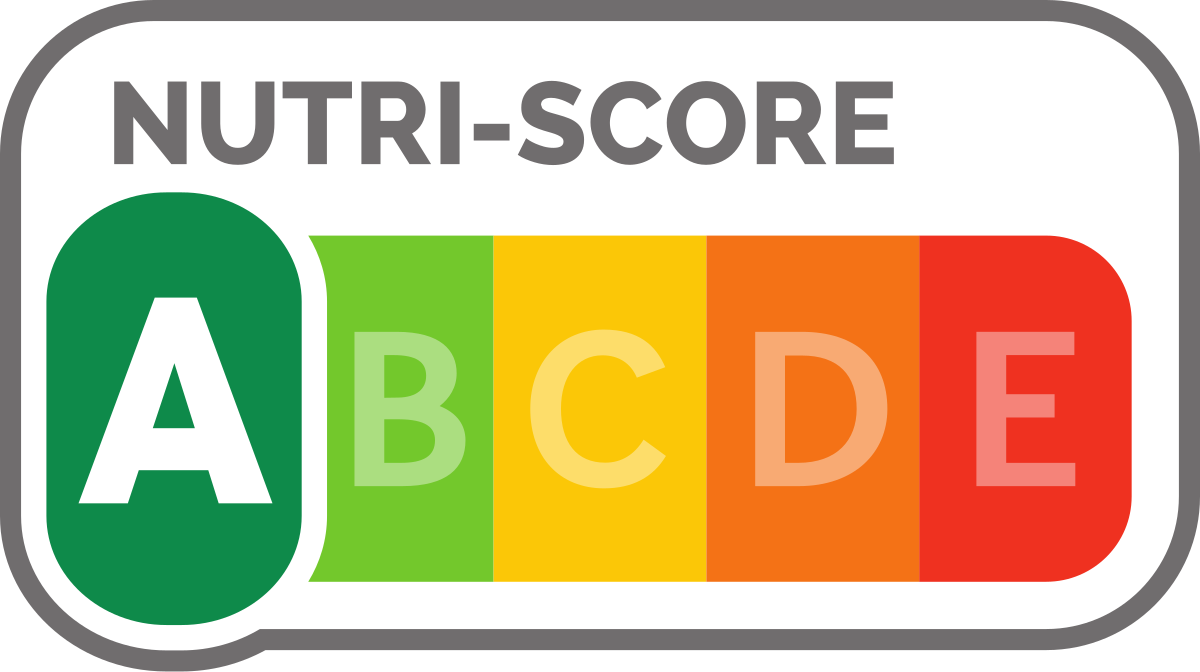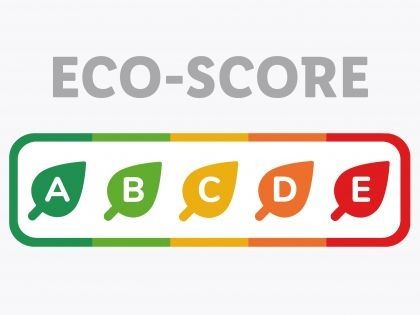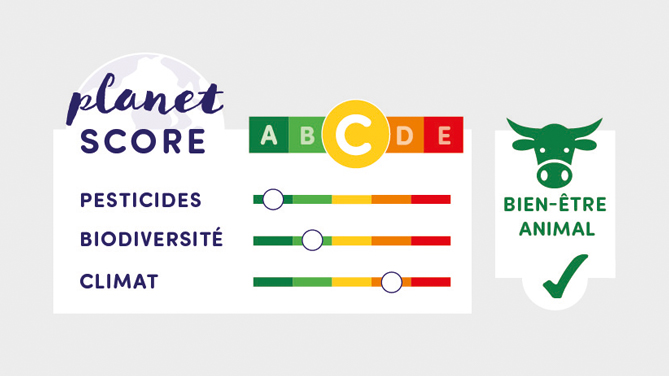
Nutri-score, Eco-score, Planet-score
Consumers are getting much more aware of the food they eat, its production and origin, as well as its environmental impact. According to the report drafted by the company Innova Market in the year 2021 an average of 21% of consumers globally said that environmental factors have become an important factor influencing purchasing choices. Some segments of the market are more affected by these issues, for example overall about 22% of meat substitute consumers mention environmental or ethical issues as a reason for purchase.
To reach a level of transparency for consumers to make informed and responsible choices, there are several European projects that are pushing for the standardization of food labels. The Farm to Fork strategy itself includes the development of a standardized labelling system, as well as SAFE (Safe Food Advocacy Europe) has started a campaign to ask for more clarity and transparency in labels in favor of consumers. In Europe we can see a first attempt of a simpler and more immediate label to be easily accessible for the consumer, the Nutri-score, developed in France and now spread in other European countries. Then, other labelling solutions were developed, which not only focus on the nutritional value of the product, but also on the degree of environmental sustainability. These are the Eco-score, and the recently suggested Planet-score.
Labelling: Nutri-score, Eco-score, Planet-score

From the desire to empower and to facilitate consumer choice, in 2017 it was implemented a new type of “flag” label for food products, known as Nutri-score. At the request of the French Ministry of Health, Santé publique France developed a color-coded scale nutritional labelling system that can be used by manufacturers on their products. The label features a five-color gradient, from dark green to dark orange, associated with letters A through E. Dark green and the letter A refer to products with the best nutritional quality, while dark orange and the letter E are associated with products with the lowest nutritional quality. The nutritional scoring method is known as FSA rating and allows the overall nutritional quality of food to be evaluated by correlating unfavorable factors such as calories, saturated fatty acids, sugars and sodium; and favorable factors such as protein fiber and fruits, vegetables, legumes, nuts and olive oils, walnuts and canola. Since then, not only France, but also several countries have decided to promote the use of the label: Belgium, Switzerland, Germany, Spain, the Netherlands and Luxembourg. This system would allow consumers to be able to easily tell the nutritional quality of products, while providing an incentive to producers to improve the product itself.

Later in France the Eco-score arrived, a second labelling method aimed at informing consumers about the environmental impact of a food product or dish. The label immediately reminds of the Nutri-score, however, instead of the nutritional aspects, it is the life cycle of a product that is evaluated, from the production system, to the packaging, as well as the impact on biodiversity. The Eco-Score has been developed by various actors from the digital world, distribution and catering, with the support of the French Agency for Ecological Transition (Ademe), and associations such as WWF, Greenpeace and Zerowaste. The scoring system starts with the Life cycle assessment of the product, based on data from the Agribalyse program of the French Agency for Economic Transition. At this point, complementary indicators are added, for example those linked to the production system, such as organic, fair trade or sustainability certifications. Other aspects taken into account are the impact linked to transportation, the recyclability of packaging, the environmental policies of producer countries and respect for biodiversity and endangered species.

Finally, an additional labelling system developed by the France Organic Food and Farming Institute (ITAB), the research organization Sayari, and the consumer-focused organization Very Good Future, the Planet-score, has recently been proposed as a way to better inform consumers about the ecological impact of products. The score is based on LCA (life cycle assessment), and its operation is similar to the Eco-score in this way. However, if the score of a product cannot be established by LCA (life cycle assessment) alone, the system will look at other categories such as pesticide use, climate impact, biodiversity, and animal welfare.
Controversial labelling: producer’s arguments
These labelling systems could definitely facilitate the choice of consumers, who would feel supported by an easy-to-use, color-coded system that immediately identifies whether a product is good from a nutritional point of view, while also being able to evaluate how sustainable it is from an environmental point of view. However, at the same time it shows some critical issues raised by the producers themselves, who perceive these simplified systems as harmful to certain types of products, which would inevitably be classified as “negative”. In this regard, not only some companies do not approve this system of labelling, but also Efsa itself, the European Food Safety Authority, which states that there are no products that are good or bad, but it is the quantity of a certain product, and the lifestyle adopted by the single person, to make the difference. Currently some countries have decided to adopt this “flag” labelling system, whereas others are strongly against it, as it would damage some product categories, such as local products like cheese or cold cuts.
